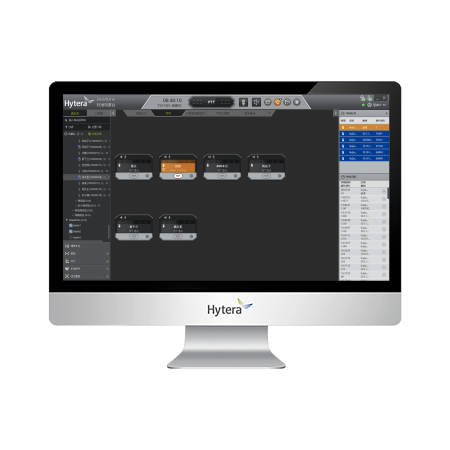
Aimed to interwork with multi-mode and multi-network communication systems in public security and rail transportation industries, and to cater for the demands of unified communication of voice, video and data, Hytera launched self-developed industry-leading multimedia unified communication platform by leveraging our years of successful experiences in private mobile radio (PMR). With features like unified access, integrated switch, and diverse application service, it has the capability of interworking and unified dispatch across terminals and systems, to achieve interconnection in both horizontal and vertical direction, and management based on authority and region. With various network topologies to use in different scenarios, the platform offers powerful communication support for daily command and control, emergency command and control, and security protection for major events.
The PUC supports interconnection and unified voice dispatch across multiple voice communication systems and terminals, including PMR systems such as digital trunked radio (DMR/TETRA), digital conventional, analog trunked radio, analog conventional, public network systems such as PSTN and PLMN, and VoIP systems. The PUC also features visualized dispatch based on the map and real-time poll of radios’ GPS data. With the cascading installation in different regions, the PUC enables flat and multi-level dispatch.
asking for a demo| 1. Interconnection between various kinds of systems – Supporting wired and wireless access – Supporting multiple communications interfaces, such as API, ISSI, CSSI, XPT, and SIP – Supporting access of various systems, such as TETRA, DMR, MPT, PSTN, PABX, and UHF – Supporting access of systems and radios provided by mainstream manufacturers |
| 2.Diverse voice and message dispatch functions – Supporting individual calls, group calls, crosspatch, broadcast calls, priority calls, emergency calls, conferences, concurrent calls, call interruption, call overriding, call transfer, call hold and resume, call alert, discreet listening, ambience listening, etc. – Supporting status and text messages |
| 3.Map-based dispatch – Periodical pulling of radios’ GPS data – Display of real-time locations of radios on the map – Calling or messaging directly on the map |
| 4.Unified dispatch interface – All systems and radios can be operated in one interface. – Users can create several workspaces for different kinds of operations. – Function authorities and radio access can be controlled by license. |
| 5.Hot standby – The dispatch server supports hot standby which enables quick switch to the standby server whenever the active one fails. |
| 6.Open platform – Supporting access of third-party systems through APIs or by standard protocols such as CSSI, ISSI, or SIP. – Supporting being invoked by 3rd party systems through APIs, SIP interfaces, web services, or OCX interfaces. |
| 7.Multi-level dispatch – Multi-level dispatch can be achieved across different levels of organization by means of dispatch server interconnection and unified authority management. |